About ‘Ili Marker
The ʻIli Markers around campus denote the ʻili they are located on and signal viewers to broader cultural and geographical context. Each marker features a puʻu (peak of our campus) that is an abstracted outline of the mountain ridges that trace Mānoa Valley. The design is meant to subtly remind viewers of our physical relationship to the mauna and ahupuaʻa. Each digital panel displays moʻolelo of the ʻili name where the marker is located and related knowledge or information about the campus environments. Through these moʻolelo, we are able to remember the abundance of a particular ʻāina. hold ancestral knowledge, making them vital in understanding the history, name meaning, and abundance of a particular place.
‘Ili Marker Design
Each ʻIli Marker features a peak-inspired design, the watermark, the ʻili name, and an informational panel or digital screen. These design choices pull qualities from the surrounding natural environment to reflect the history of Mānoa Valley. At the base of each Marker, the star compass helps to situate viewers within a larger navigational framework and orientation.
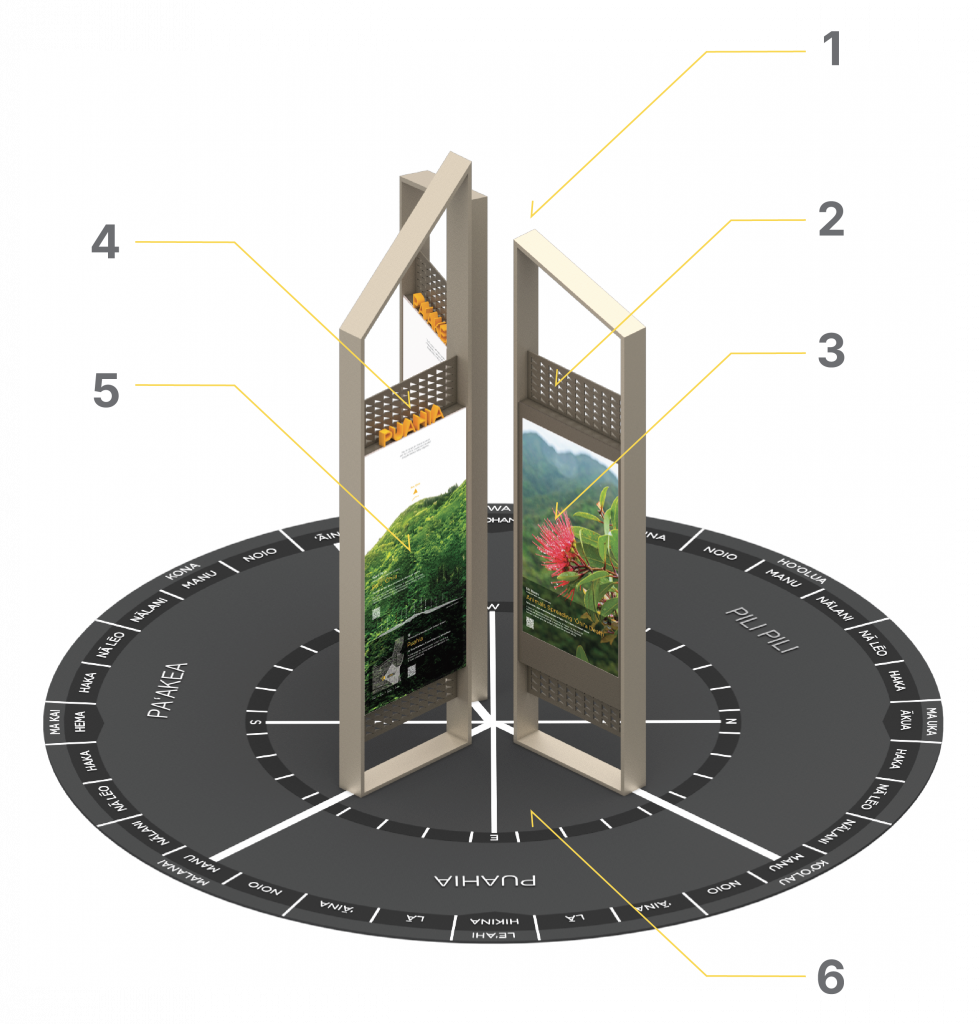
1. Peaks: The puʻu on each ʻIli Marker was inspired by some of the well-known peaks that line Mānoa Valley.
2. Watermark: Derived from kapa traditions, the watermark design is a recurring motif throughout campus branding and signage that unifies the campus.
3. Digital Screen: The digital screen displays rotating content that includes UH news, upcoming event information, and community announcements.
4. ʻIli Name: To indicate the location of each Marker, the ʻili name is represented at the top of the informational panels.
5. Information Panel: These panels provide cultural or historical information about the ʻili and the ʻIli Marker’s associated peak.
6. Star Compass: Located at the base of each ʻIli Marker, the star compass serves as a navigational tool to help orient viewers within the campus and the surrounding landscape.
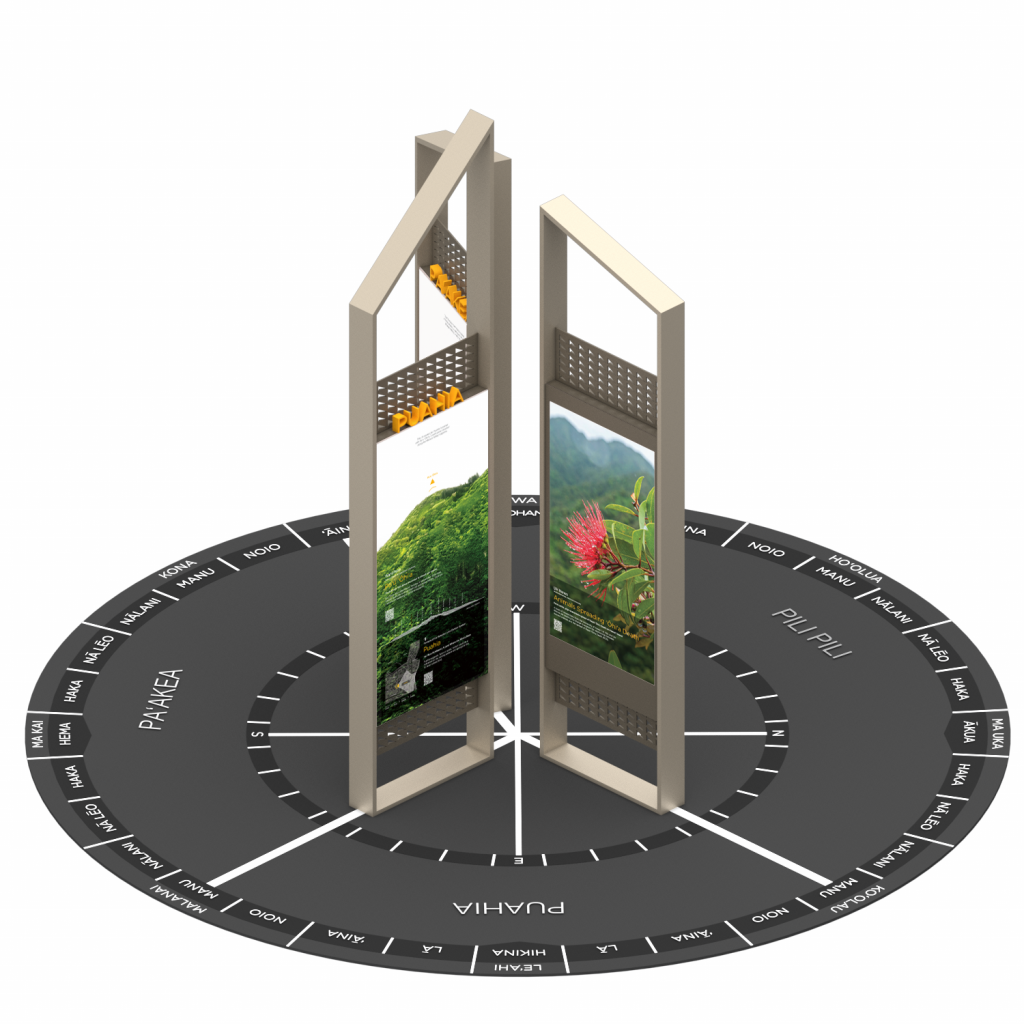
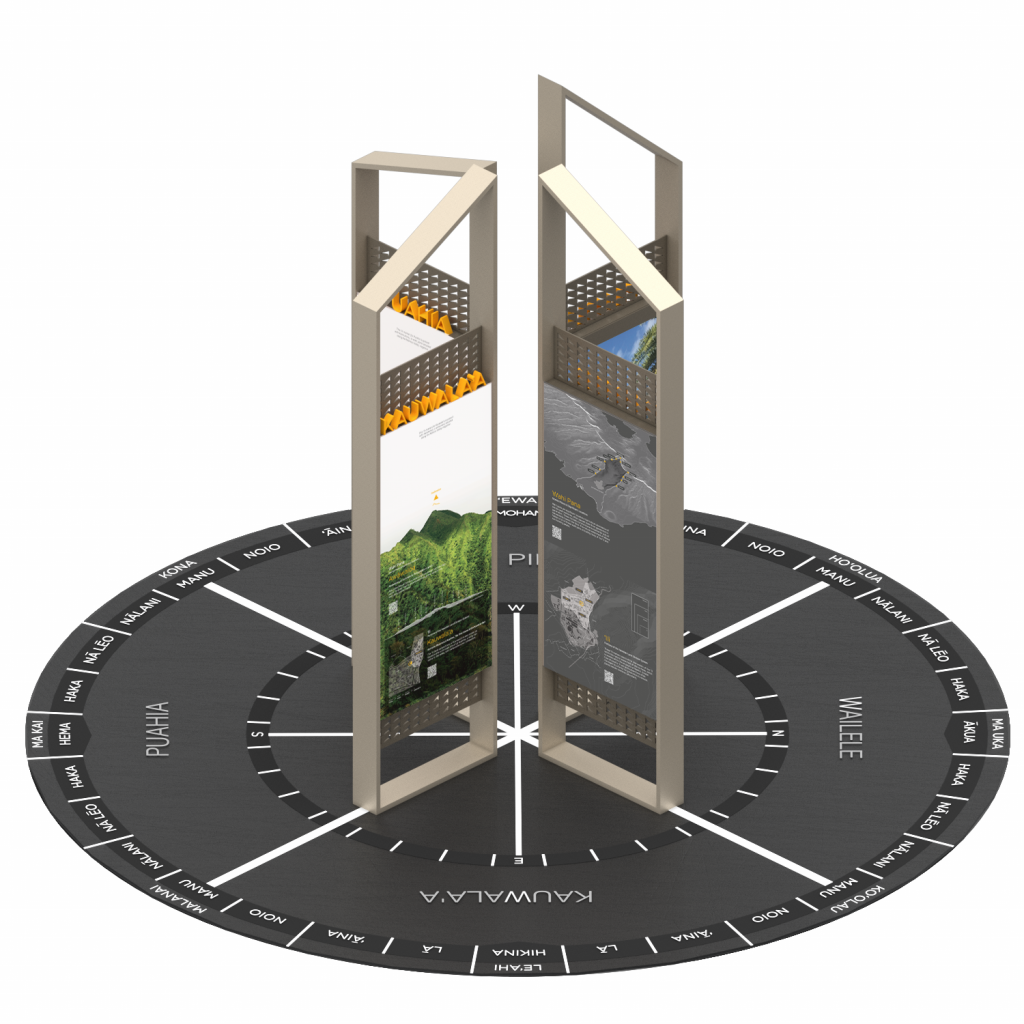

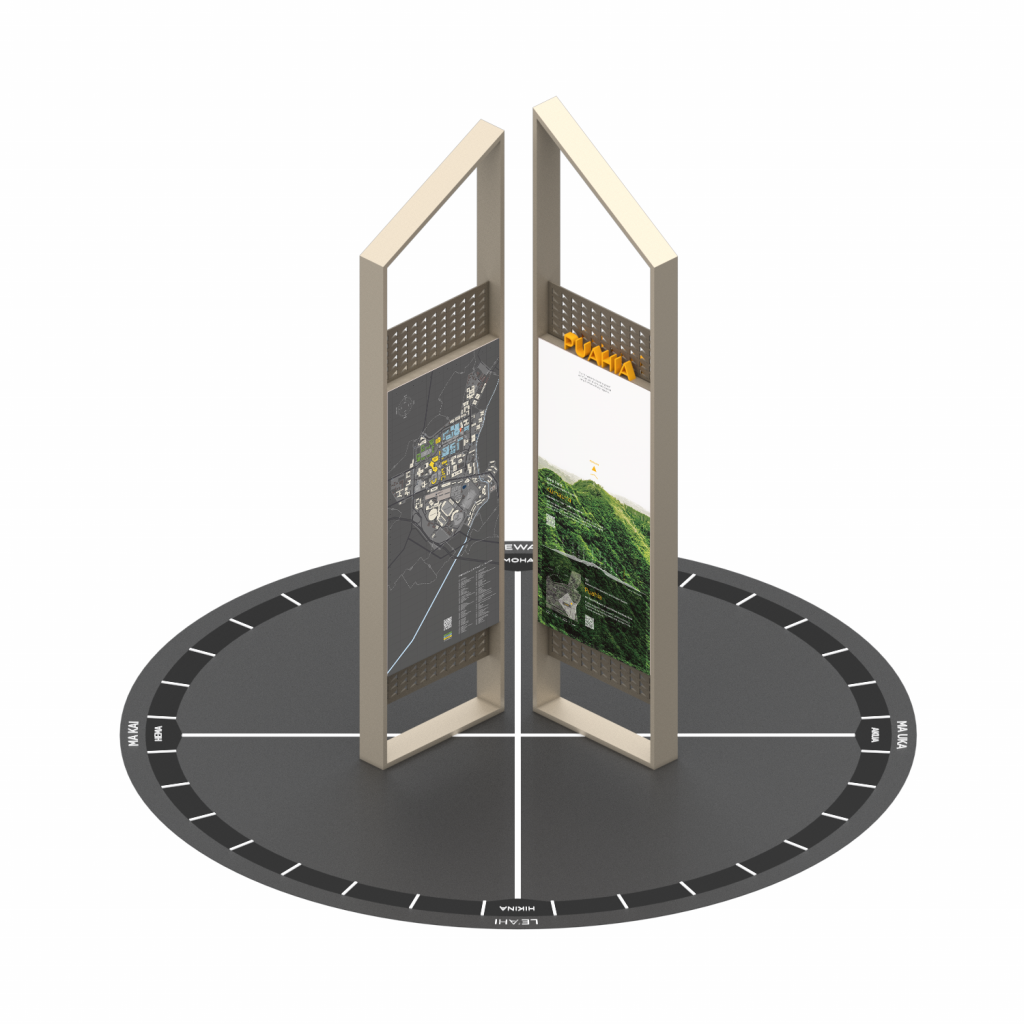
Campus Center
This ʻIli Marker is situated in the ʻili of Pilipili, Puahia, and Paʻakea.
McCarthy Mall
This ʻIli Marker is situated in the ʻili of Wailele, Pilipili, Puahia, and Kauwalaʻa.
Quad
This ʻIli Marker is situated in the ʻili of Pilipili.
East-West
This ʻIli Marker is situated in the ʻili of Puahia.
Information Panel Design
The edge of each ʻIli Marker is shaped to reflect the distinctive ridgelines that frame Mānoa Valley offering a subtle reminder of the Valley’s natural boundaries and contours.

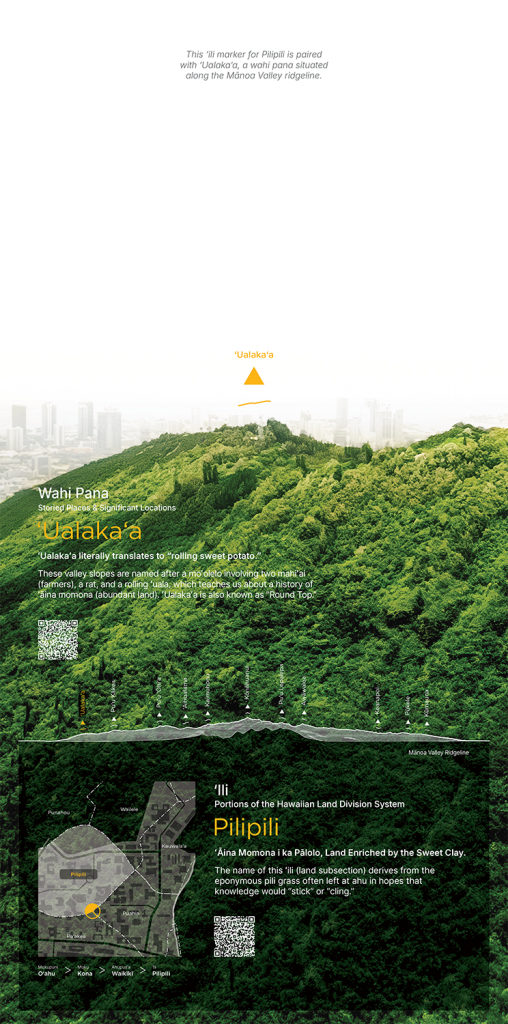
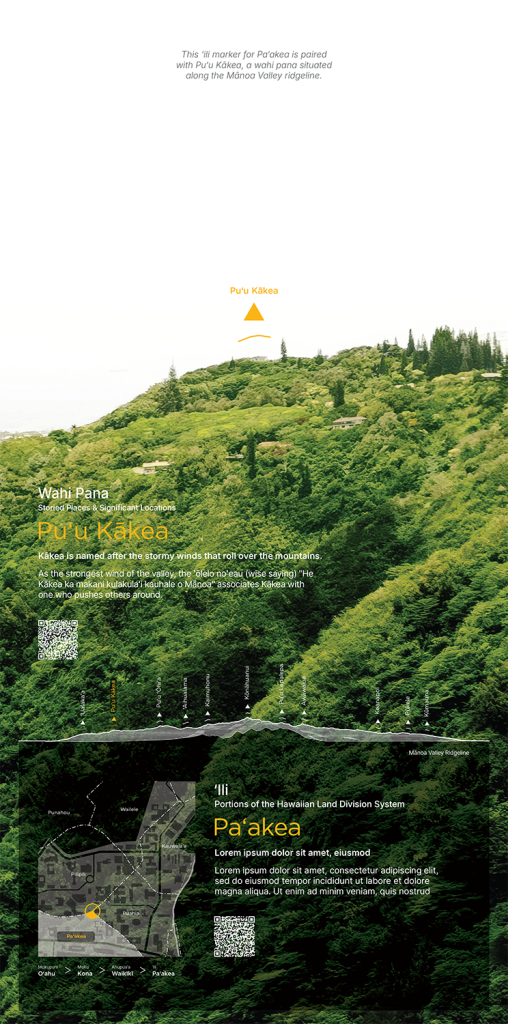
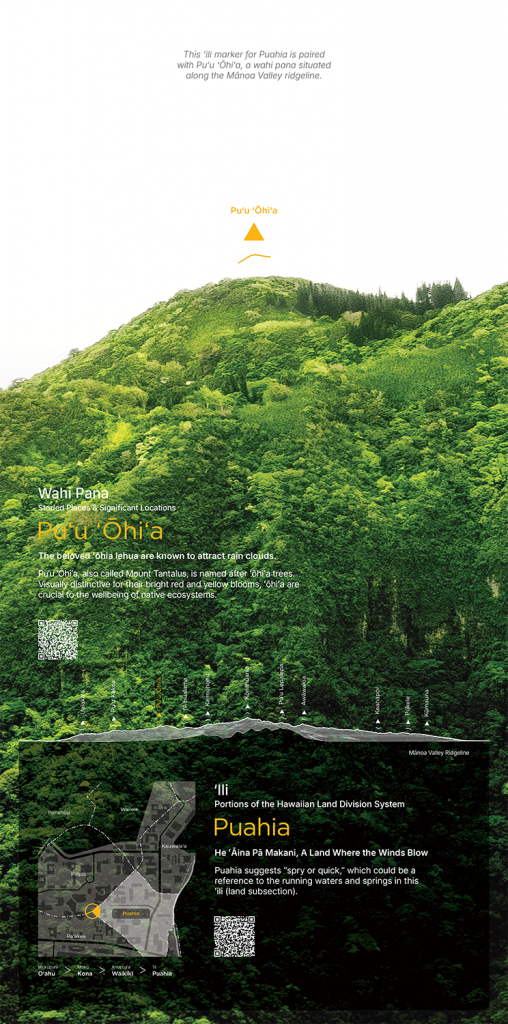

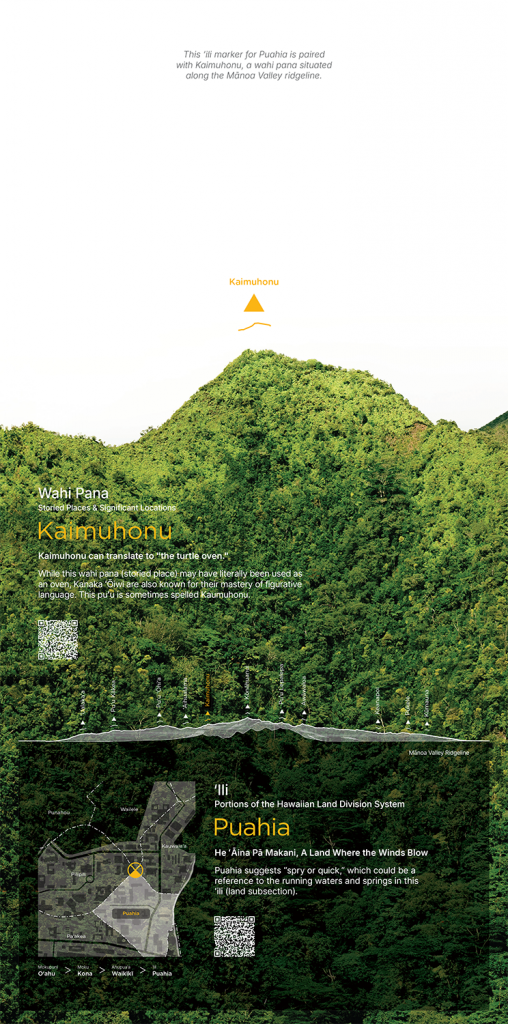
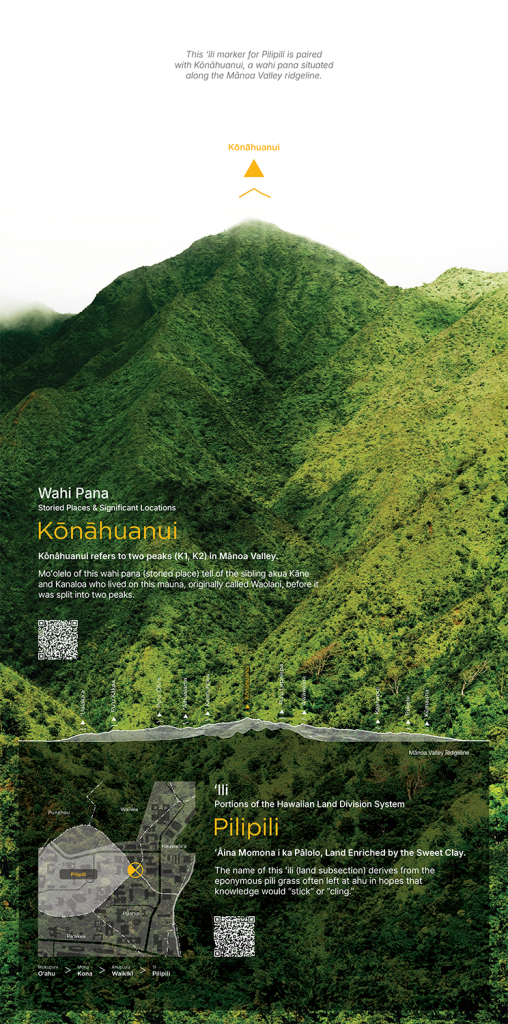





Pu’u Kākea
Pu’u ‘Ōhi’a
Pu’u Lepalepa

1. Peaks: Each Marker is associated with a nearby peak drawing inspiration from notable landmarks such as ʻUalakaʻa, Kōnāhuanui, and Pūkele to honor the mauna that watch over the Valley.
2. Wahi Pana: This section highlights wahi pana, or storied places, which include prominent peaks, ʻili, and other culturally significant sites that carry ancestral memory and moʻolelo passed down through generations.
3. Mānoa Valley Ridgeline: The Mānoa ridgeline consists of dramatic peaks and lush slopes that define the region’s physical and ecological character. These ridgelines are integral to traditional land divisions, water flow, and the cultural memory embedded in the valley’s wahi pana.
4. ʻIli: This section provides context about the ʻili in which the Marker sits, providing traditional land divisions within the ahupuaʻa system, often cared for by families to ensure abundance across generations.
5. QR Code: A QR code directs viewers to the Wayfinding systems website where expanded information about the wahi pana, ʻili, and general content are available.

Special Thanks
Tower Signage Committee
- Christina Higgins, Department of Second Language Studies
- Uluwehi Hopkins, Department of History
- Craig Howes, Center for Biographical Research
- Lilikalā Kameʻelehiwa, Kamakūokalani Center for Hawaiian Studies
- Halena Kapuni-Reynolds, Museum Studies Graduate Certificate Program
- Kaiwipuni Punihei Lipe, Native Hawaiian Place of Learning Advancement Office
- Helen Wong Smith, University Archives & Manuscripts, Library Services
- Wyatt Nainoa Souza, Department of English
- Sonya Zabala, Native Hawaiian Place of Learning Advancement Office
Sources
- Pukui, Mary Kawena, and Samuel Hoyt Elbert. “ʻIli.” In Hawaiian-English Dictionary, 1986. : Link
- Pukui, Mary Kawena, and Samuel Hoyt Elbert. “ʻIli Kūpono.” In Hawaiian-English Dictionary, 1986. : Link
- Pukui, Mary Kawena, and Samuel Hoyt Elbert. “ʻIli ʻāina.” In Hawaiian-English Dictionary, 1986. : Link
